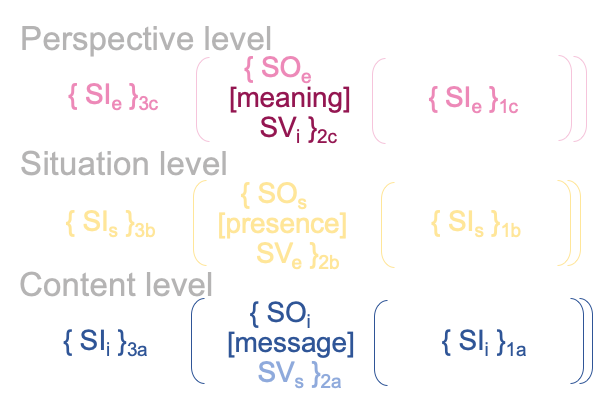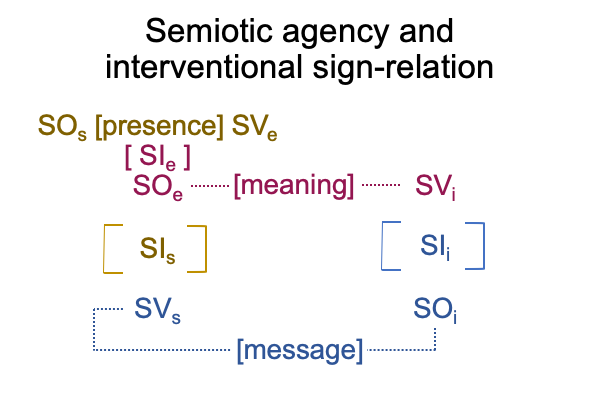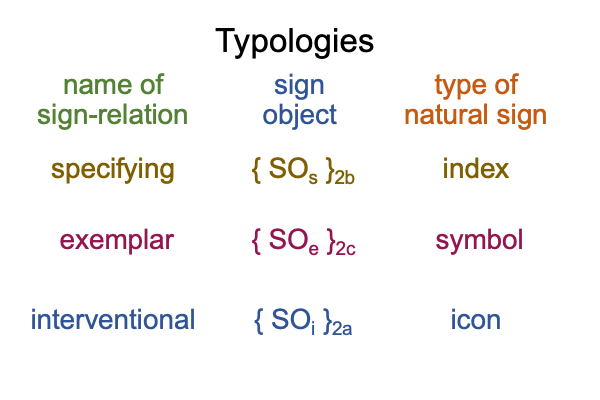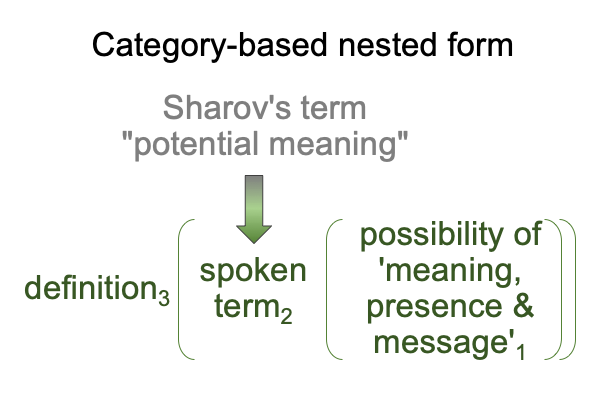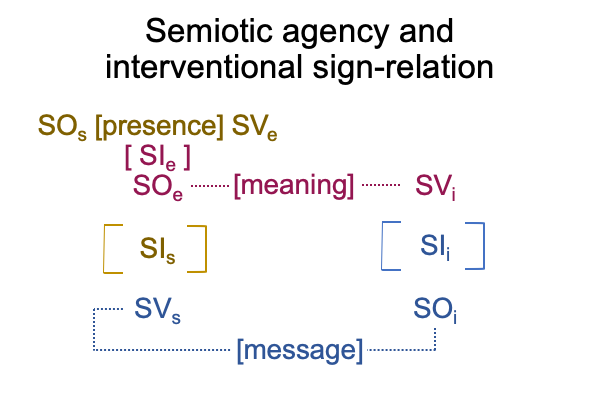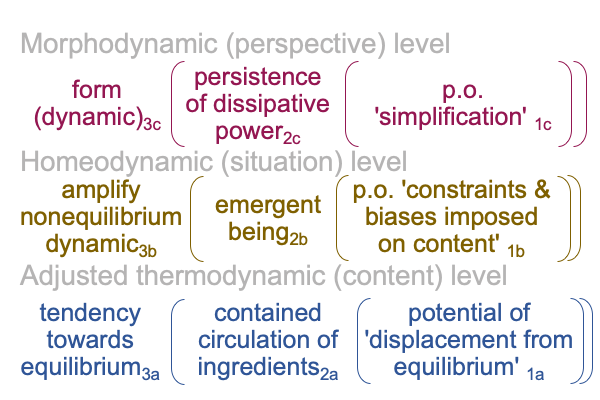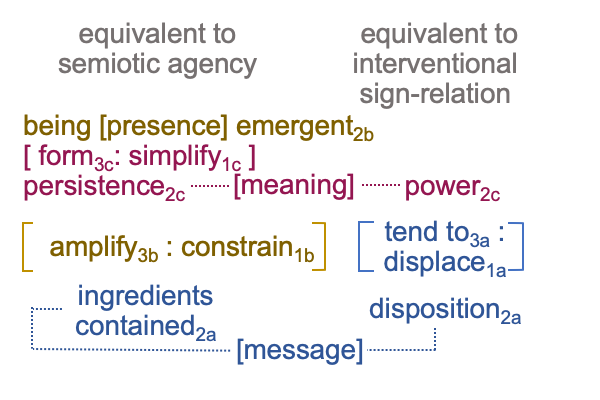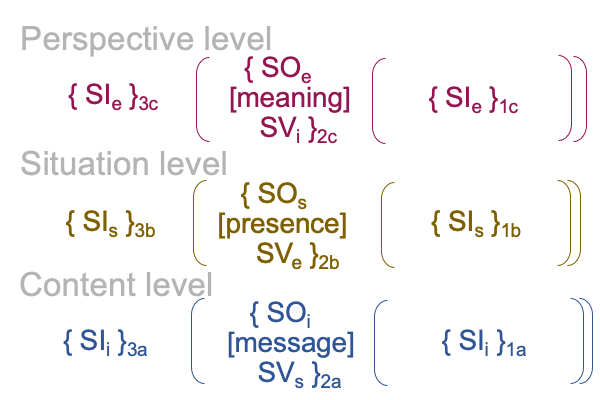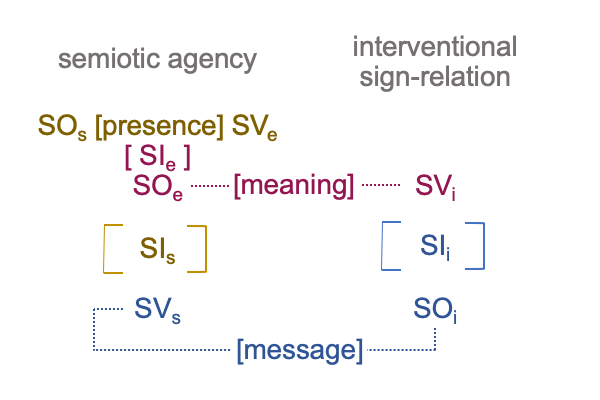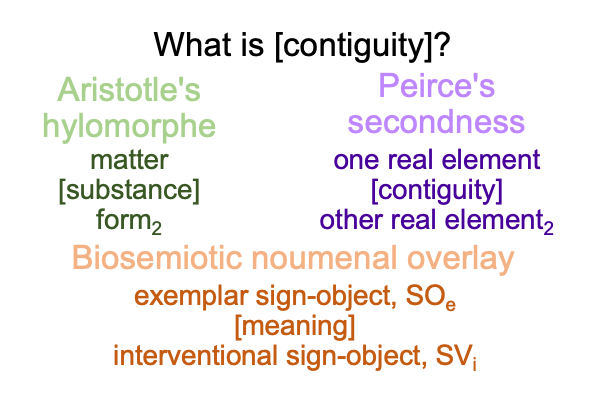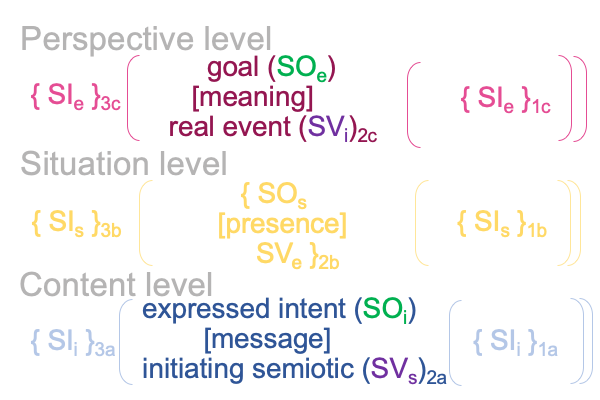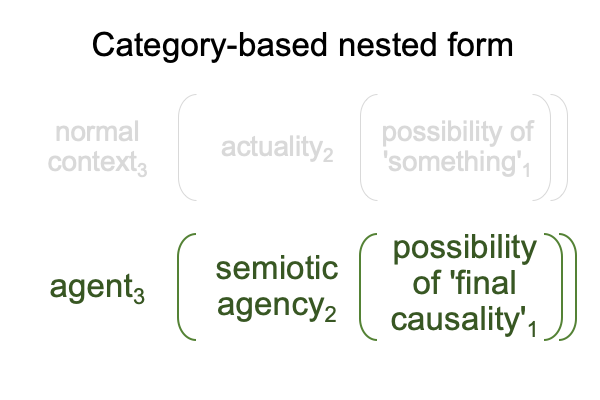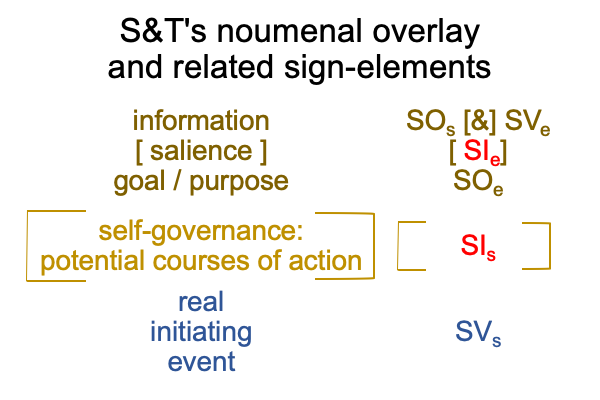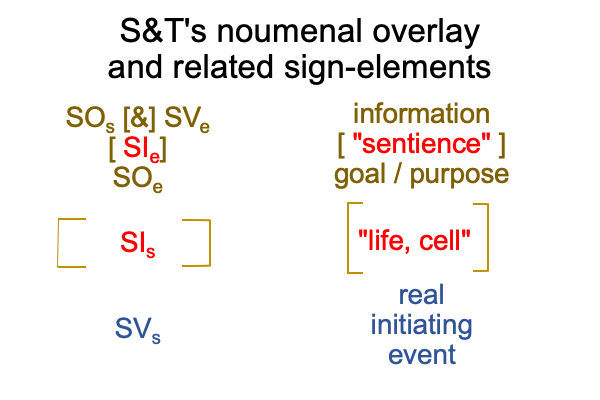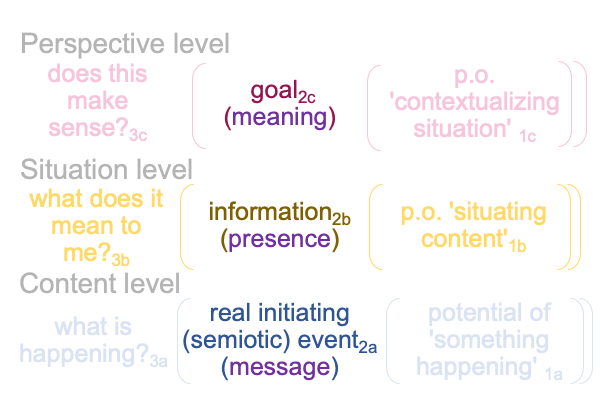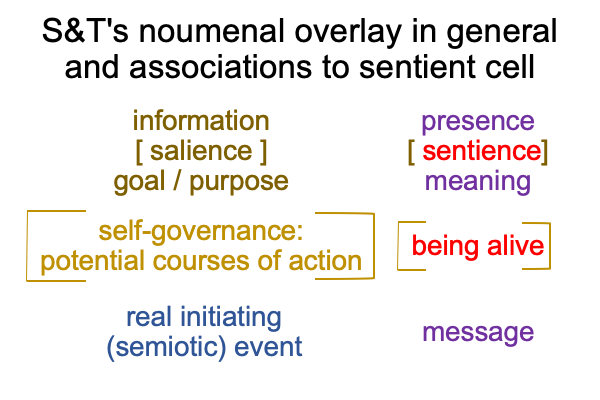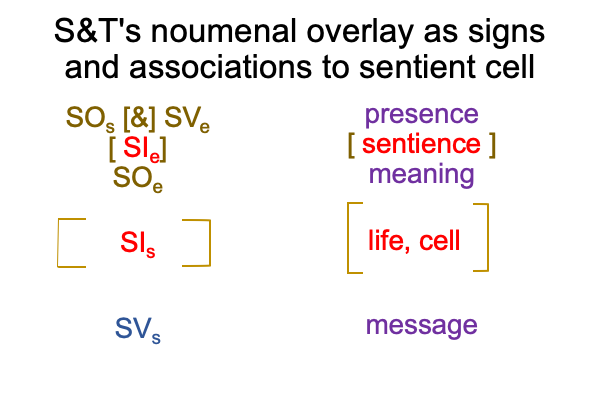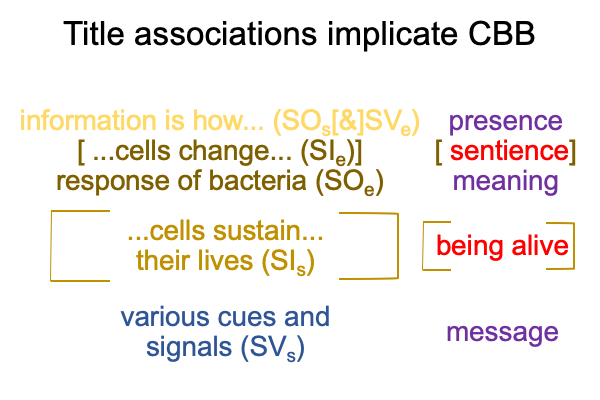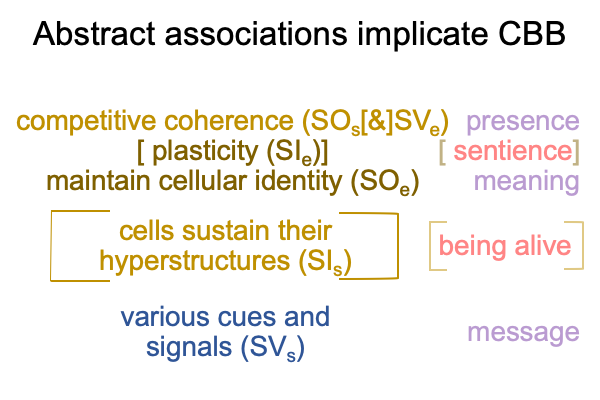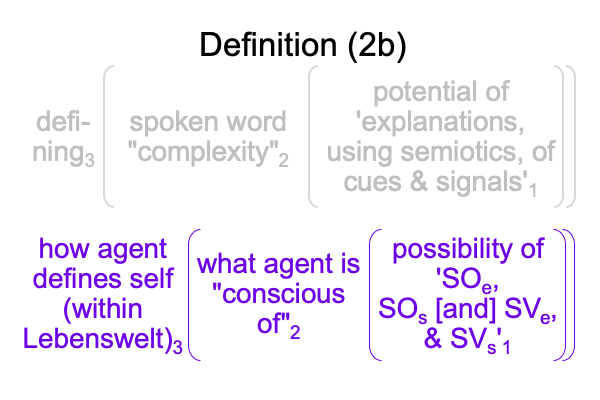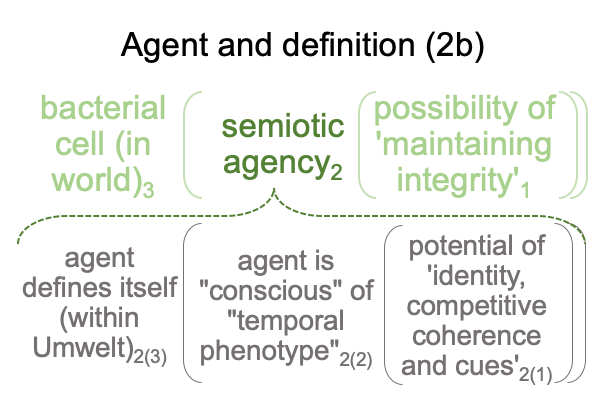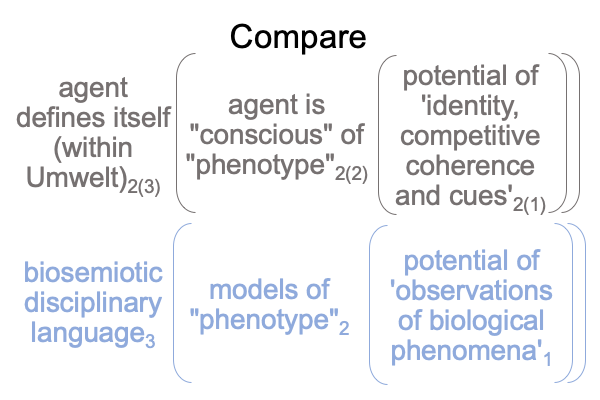The Scholastic Interscope For How Humans Think (Part 1 of 4)
0871 The scholastic three-level interscope for how humans think is introduced in Comments on John Deely’s Book (1994) New Beginnings (by Razie Mah, available at smashwords and other e-book venues).
The conceptual apparatus is developed in A Primer on the Category-Based Nested Form and A Primer on Sensible and Social Construction.
The semiotic tool is productively used in Looking at John Deely’s Book (2010) “Semiotic Animal” (appearing in July 2024 in Razie Mah’s blog).
0872 Here is a diagram.
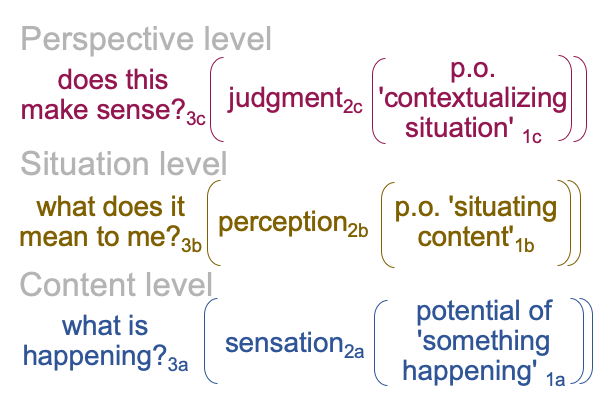
0873 The three-level interscope is a category-based nested form composed of category-based nested forms.
For each level, a triadic normal context3 brings a dyadic actuality2 into relation with a monadic possibility of ‘something’1.
Among levels, perspectivec brings situationb into relation with contenta. Likewise, thirdness brings secondness into relation with firstness.
0874 Here is how each nested form is articulated.
On the content level, the normal context of what is happening3a brings the actuality of sensation2a into relation with the potential of ‘something happening’1a.
On the situation level, the normal context of what it means to me3b brings the actuality of perception2b into relation with the possibility of ‘situating content’1b.
On the perspective level, the normal context of whether this makes sense3c brings the actuality of a judgment2c into relation with the possibility of ‘contextualizing the situation’1c.
0874 Notice that the actualities are not portrayed as dyads. When they are, the scholastic interscope becomes more… well… beautiful. And, biosemioticians must be careful when a transcendental manifests, like a beautiful painting at the end of a hallway. There is no telling where that hallway leads.
0875 What about biosemiotics?
Elements of Sharov and Tonnessen’s noumenal overlay fit nicely into various slots in the scholastic interscope.
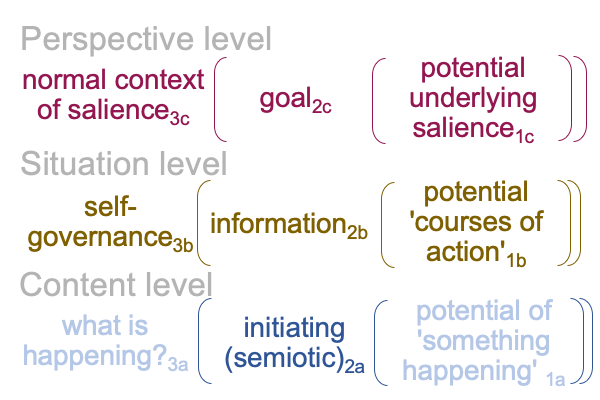
0876 Can I discern a specifying sign-relation?
Here, the initiating (semiotic)2a is a real event2a.
Information2b virtually situates the initiating semiotic2a, in the same way that a specifying sign-object (SOs) virtually situates its sign-vehicle (SVs).
Notice that both SOs and SVs belong to the realm of actuality.
0877 A specifying sign-interpretant (SIs) enables the SVs to stand for its SOs.
What is that SIs?
SIs consists of the situation-level normal context3b operating on its possibility1b.
In this instance, SIs is the normal context of self-governance3b operating on potential ‘courses of action’1b.
0878 I can go further.
I can imagine the exemplar sign-relation.
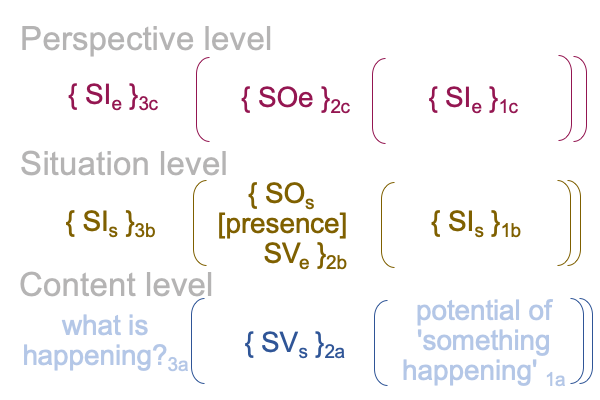
0879 A perspective-level goal2c virtually contextualizes situation-level information2b, in the same way that an exemplar sign-object (SOe) virtually contextualizes its sign-vehicle (SVe).
Both SOe and SVe belong to the realm of actuality.
0880 An exemplar sign-interpretant (SIe) enables the SVe to stand for its SOe.
What is that SIe?
This is where the scholastic interscope for how humans think comes in handy.
For semiotic agency, the SIe is vague. The normal context of salience3c operates on a potential underlying salience1c. I suppose the potential1c is ‘the possibility1c of contextualizing information2b‘, if that helps.
For the scholastic interscope, the normal context asking, “Does this make sense?”3c operates on the possibility of ‘contextualizing the situation’1c.
0881 To me, this implies that the term, “salience3c((1c))“, supports an actuality2c that weighs perception2b against sensation2a, while asking what goal2c might be attempted.
What does that imply?
0882 The scholastic interscope contains the specifying and exemplar sign relations, which figure so prominently in semiotic agency.

